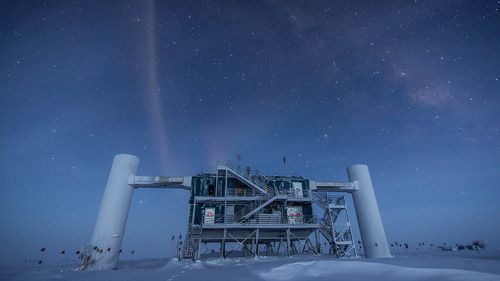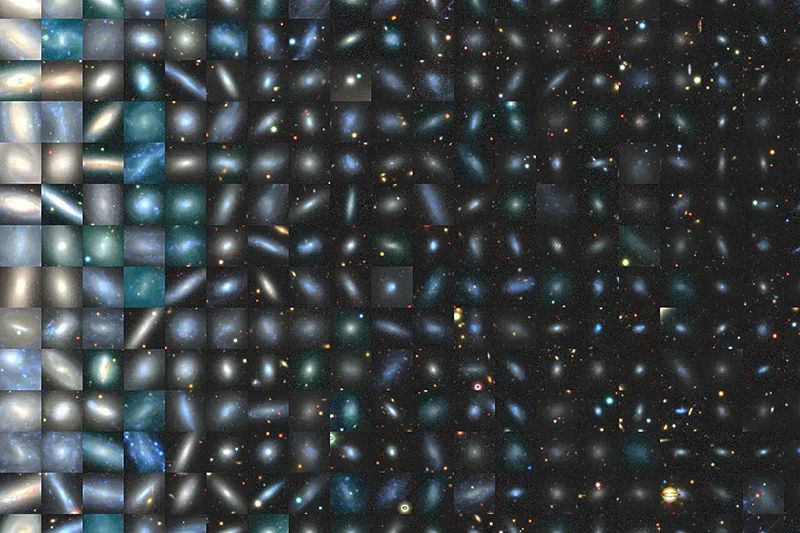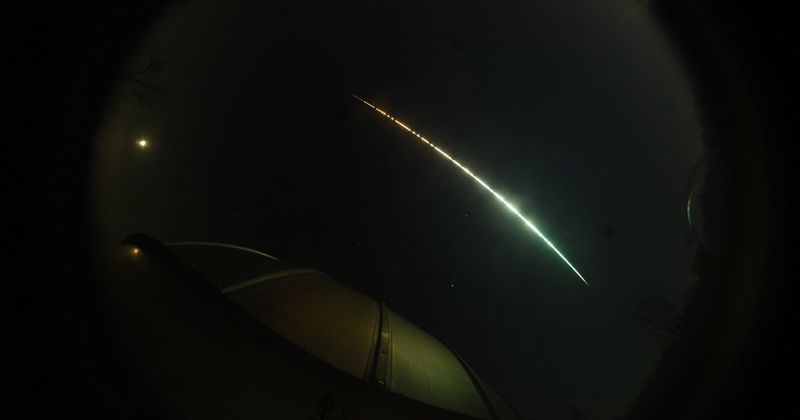A vast network of detectors buried in an Antarctic glacier has tracked high-energy neutrinos as they collide with the surrounding ice. The flashes given off are exactly what would be expected under the so-called “standard model” of particle physics, the theoretical framework of how subatomic particles behave that has the most support among physicists, but still needs plenty of verification.
We understand some basic building blocks of matter well because we can produce and test them using particle accelerators. The standard model explains these effectively. However, the universe produces particles far more powerful than anything we can yet make, and we don't know if reality deviates from the model, much like moving objects approaching light-speed or strong gravitational fields behaving in ways Newton would never have anticipated.
To study one example of these high-energy particles, physicists from 49 institutions across 12 nations created the IceCube Neutrino Observatory, which is composed of 5,000 optical sensors distributed through a cubic kilometer (0.24 cubic miles) of ice at the South Pole. These detectors catch the brief flashes of light emitted when very-high-energy neutrinos – around 1,000 times more energetic than the most powerful we can produce – interact with protons or neutrons in the ice.
The neutrinos are formed in the atmosphere through collisions between cosmic rays and nuclei in the Earth's atmosphere. Dr Gary Hill of the University of Adelaide, Australia, told IFLScience that when these neutrinos collide with a proton or neutron, they create other particles, most often muons. Since the muons carry most of the neutron's momentum, they continue along a similar path, creating flashes of light on their way. In a transparent medium such as ice or water, we can see the path of these flashes, allowing us to learn the neutrino's direction and energy.
The neutrinos are formed not just in the air above the South Pole, but everywhere on the planet, with many passing through the Earth to be detected by IceCube as they emerge. The standard model predicts, however, that many of those at higher energies should interact deep within the Earth and never make it through.
IceCube's measurements of neutrino rates from all directions have been published in Nature. “In this study, we’ve looked at these neutrinos in the IceCube Observatory, and see that they behave exactly as predicted by the Standard Model. This did not have to be the case – the theory, based on data at lower energies, could have been found to not apply at high energies, but it turns out to work beautifully,” said Hill.
Eventually, Hill hopes we will track enough neutrinos to use them like a planetary X-Ray machine, comparing the density of the Earth's core with that of the mantle and crust.




